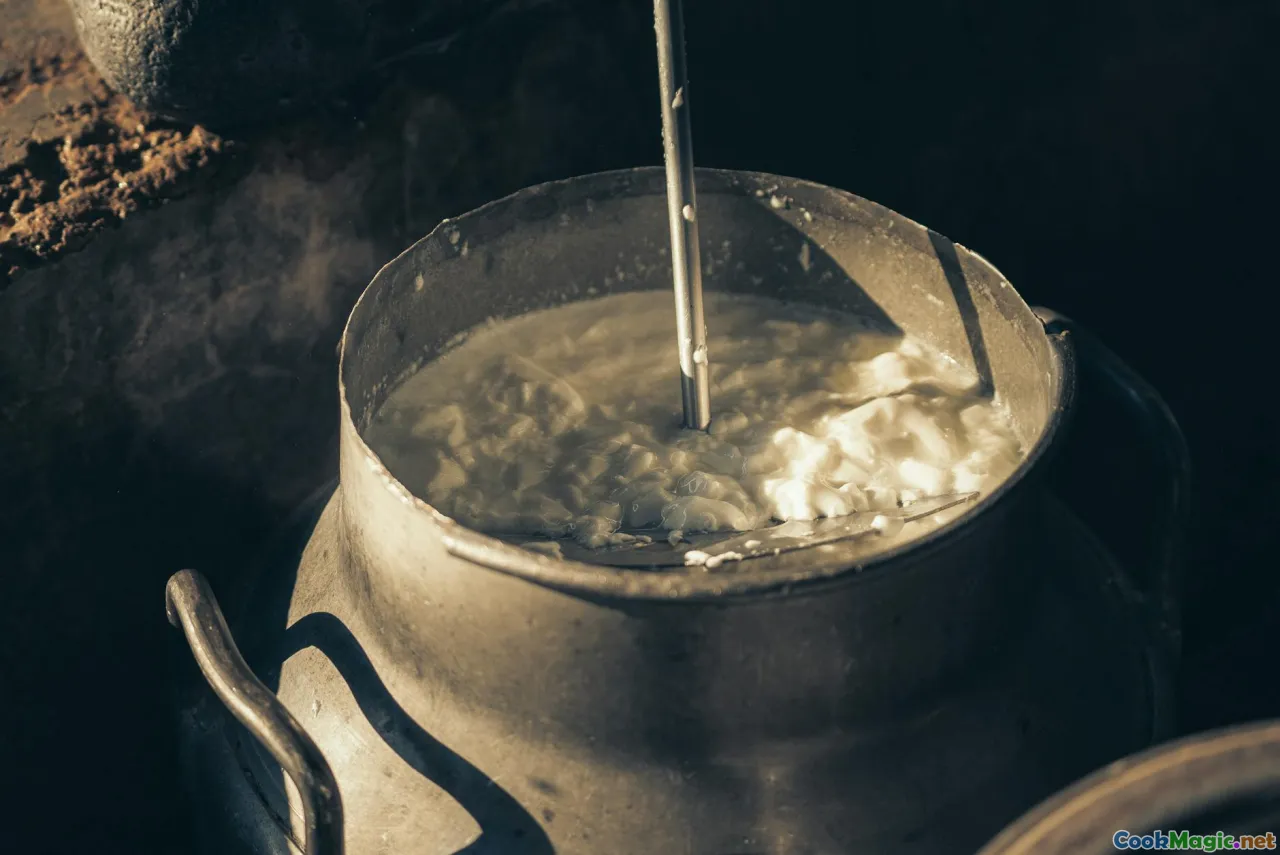The Role of Dairy in Mongolian Diet
8 min read Explore how dairy shapes Mongolian culture, sustains nomadic life, and flavors traditional dishes with rich textures and deep history. April 22, 2025 13:00
The Role of Dairy in Mongolian Diet
Imagine vast steppes stretching endlessly under a sky painted with shifting clouds—this is Mongolia, a land where nomadic herders have thrived for centuries. Amidst the rugged beauty of these expansive landscapes, a remarkable culinary tradition has persisted: the profound reliance on dairy. From the early morning milking of yaks and goats to the fermentation of dairy into iconic Mongolian staples, dairy is not merely sustenance; it’s a thread woven into the very fabric of Mongolian identity.
An Ancient Bond: The Cultural Significance of Dairy in Mongolia
For Mongolian herders, dairy is more than food—it is a symbol of life, resilience, and cultural continuity. The nomadic lifestyle, with its seasonal migrations and close relationship with the land, has fostered a deep understanding of the animals that provide vital nourishment.
Historically, dairy products enabled Mongolians to survive harsh winters and unpredictable weather. The ability to preserve milk through fermentation or drying meant that food was stored safely for months, ensuring survival during times of scarcity. The importance of dairy is so ingrained that it features prominently in traditional festivals, rituals, and social gatherings.
The Livestock and Dairy Economy
Mongolia's arid and semi-arid climate favors hardy livestock—primarily yaks, goats, sheep, and camels—that are well-adapted to the environment. These animals are the backbone of the dairy economy.
Yaks, in particular, produce rich, high-fat milk, which is prized for its flavor and nutritional value. Goats and sheep, more resilient to the colder and drier conditions, contribute milk that is used to produce a variety of traditional products.
The seasonal cycle revolves around the herd’s grazing patterns, with dairy production peaking in the warmer months when pasture is abundant. However, the Mongolian herders have mastered preserving dairy through fermentation, drying, and aging techniques that allow consumption year-round.
Traditional Dairy Products: From Fresh to Fermented
Milk — The Fresh Foundation
The most straightforward dairy product is fresh milk, often consumed directly after milking. Warm from the animal, it is a nourishing elixir, its creamy texture and slightly grassy aroma embodying the essence of the Mongolian steppes.
Airag (Kumis) — The Fermented Delight
Arguably the most iconic Mongolian dairy product, airag (or kumis) is fermented mare’s milk that is slightly sour, effervescent, and mildly alcoholic. Its preparation is an art passed down through generations.
The process begins with fresh mare’s milk, which is kept in a leather bag or wooden container to ferment naturally. The fermentation process, spanning a few days to weeks, develops a tangy flavor reminiscent of a mild yogurt but with a unique effervescence. The light alcohol content (around 1-3%) makes it a social beverage, often shared among friends and family during celebrations.
The sensory experience of airag is unforgettable—the frothy, slightly sour drink tingles on the palate, its aroma a blend of earthiness and a hint of sour milk. It is both refreshing and invigorating, believed to boost health and vitality.
Dairy Cheeses and Harder Products
Mongolians also produce various cheeses, such as kashk and yogurt cheese, which are often dried and stored for winter use. These cheeses are salt-cured and have a firm, crumbly texture, with a pungent aroma that signifies their traditional fermentation methods.
Airag Variations and Other Fermented Milks
In addition to mare’s milk, goat and sheep milk are fermented into similar products. Each has subtle differences in flavor and aroma, influenced by the animal’s diet and the fermentation process.
The Techniques of Preservation and Flavor Development
Dairy preservation techniques are central to Mongolian culinary culture. Fermentation, drying, and aging not only extend shelf life but also develop complex flavors.
- Fermentation: As with airag, natural fermentation transforms milk into tangy, effervescent drinks, rich in probiotics.
- Drying: Milk solids are dried into khamir or boortsog, which can be stored for months.
- Aging: Cheese and curd products are aged to develop sharper flavors.
These methods reflect a deep understanding of natural processes, harnessed over generations to ensure food security.
Personal Reflections and Cultural Insights
Having traveled across Mongolia, I’ve been fortunate to witness firsthand the pivotal role dairy plays in daily life. I remember sitting around a yurt as the herders prepared airag, the frothy, sour-smelling beverage bubbling in a leather bag, its aroma mingling with the crisp mountain air.
The ritual of sharing airag is a symbol of hospitality and community. It’s not just about nourishment but also about connection—an ancient tradition that binds generations.
In winter, the smell of dried cheese and fermented milk products fills the yurt, a comforting reminder of the cyclical nature of nomadic life. These flavors, though acquired, evoke a sense of belonging and resilience.
Contemporary Perspectives and Challenges
Modern influences and climate change pose challenges to traditional dairy practices. Reduced grazing land and changing herding patterns threaten the sustainability of dairy production.
Yet, there is a growing movement within Mongolia to preserve these ancient techniques, blending traditional methods with modern innovations to ensure the survival of this vital cultural heritage.
Conclusion: Dairy as the Heartbeat of Mongolian Life
Dairy in Mongolia is more than a dietary component; it is a living symbol of the land’s history, resilience, and spirit. From the robust, fermented mare’s milk to the simple joy of fresh milk straight from the animal, each product tells a story of survival, community, and harmony with nature.
As you sip a glass of airag or savor a piece of dried cheese, remember that these flavors carry centuries of tradition—an enduring testament to the enduring Mongolian way of life on the vast, majestic steppes.









